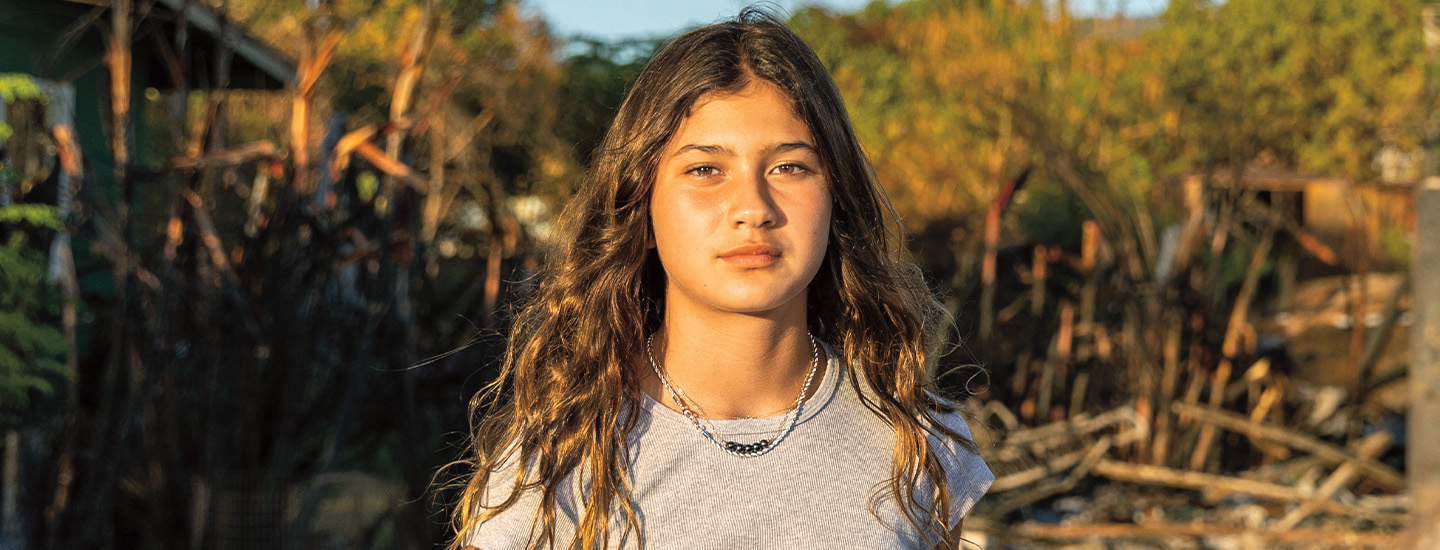When did your mom return?
She came back the next morning. She was covered in ash. Her eyes were bloodshot. I could tell she was very sad. I remember people asking if their houses were OK. She had to tell them no, that everything was wiped out. All the adults and kids were crying.
How were the next few days?
We were mostly just trying to find a place to stay. We were also worried about our extended family. I wanted to see if my friends were OK.
People set up centers where you could get food, water, and other supplies. I got a toothbrush and toothpaste because I forgot to bring those. I also got some clothes. We were all really grateful.
One person used a generator to power a TV, so we all went to watch. It showed drone footage of Lahaina. It was hard to tell what some things were. It was all ash and broken cement pieces. They showed my school. It was gone—all gone.
Were you able to visit Lahaina?
About a week or two after the fire, we went back to look for our two cats. We had to wear masks because of all the ash and fumes.
The house was flat. And our car was melted. The metal looked like a liquid, but it was solid. I found some glass bowls. My mom found a chunk of something gold-looking. We don’t know what it is.
Besides the house, I’m also sad about losing my school and my dad’s coffee shop. It was right next to my mom’s surf school, where she taught kids lessons and did surf camps. That’s gone too.
I am probably saddest about losing my grandparents’ house. They built it by hand. It’s where my mom grew up. I went there all the time. They also had a sailboat called Tita that my grandpa built. It was in the harbor, and it burned. It’s really hard to think about losing it. Anytime a Hawaiian song comes on, I remember being on the boat and how happy I was there.
We found our first cat, Pumpkin, on that day we went back. My mom found our other cat, Pepper, a few weeks later. I was shocked and very happy that he had survived.

